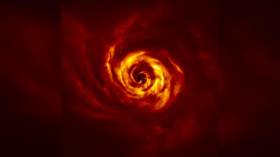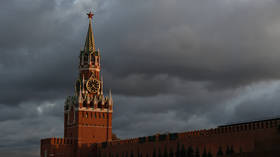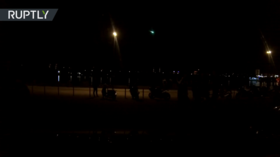A whole new world? Stunning images of whirling space dust and gases may show birth of a planet

Scientists have taken a closer look at the disc of dust around a young nearby star and may have spotted signs that a new planet will be born there soon – at least in astronomical terms.
Astronomers have a pretty good idea about how planetary systems form, but having a good model and actually witnessing the process are two very different things. Scientists may now be a bit closer to proving their theories about the creation of new planets after examining a young star in the Auriga constellation.
The young star AB Aurigae floats in a part of space dubbed a ‘stellar nursery’, meaning a region of intensive star formation. Located about 520 light years away, it’s among the closest of its kind to our planet.
In 2017, observations with the Atacama Large Millimeter/submillimeter Array (ALMA) found a spiral pattern in the disc of dust surrounding the star, which is an indicator of planet formation. In December 2019 and January 2020, an international team of scientists used the Very Large Telescope in Chile to take some high-contrast images of AB Aurigae in near-infrared light, resulting in highly detailed pictures of the protoplanetary cloud.
The S-shaped ‘twist’ seen in the very center of the system is likely caused by a process called ‘Lindblad resonance’. It’s also believed to be responsible for the shape of spiral galaxies and interactions between Saturn’s moons and rings, but in this case it’s important because it indicates a crucial sign in planet formation.
The distinctive shape is essentially a cosmic ultrasound image of a baby planet, except this infant may grow up to be between four and 13 times larger than Jupiter, the researchers say.
“The twist and its apparent orbital motion could well be the first direct evidence of a connection between a protoplanet candidate and its manifestation as a spiral imprinted in the gas and dust distributions,” the team concluded. Their observations have been published in the journal Astronomy & Astrophysics.
Also on rt.com Two asteroids to approach Earth on Monday, one of them BIGGER than STATUE OF LIBERTYLike this story? Share it with a friend!














